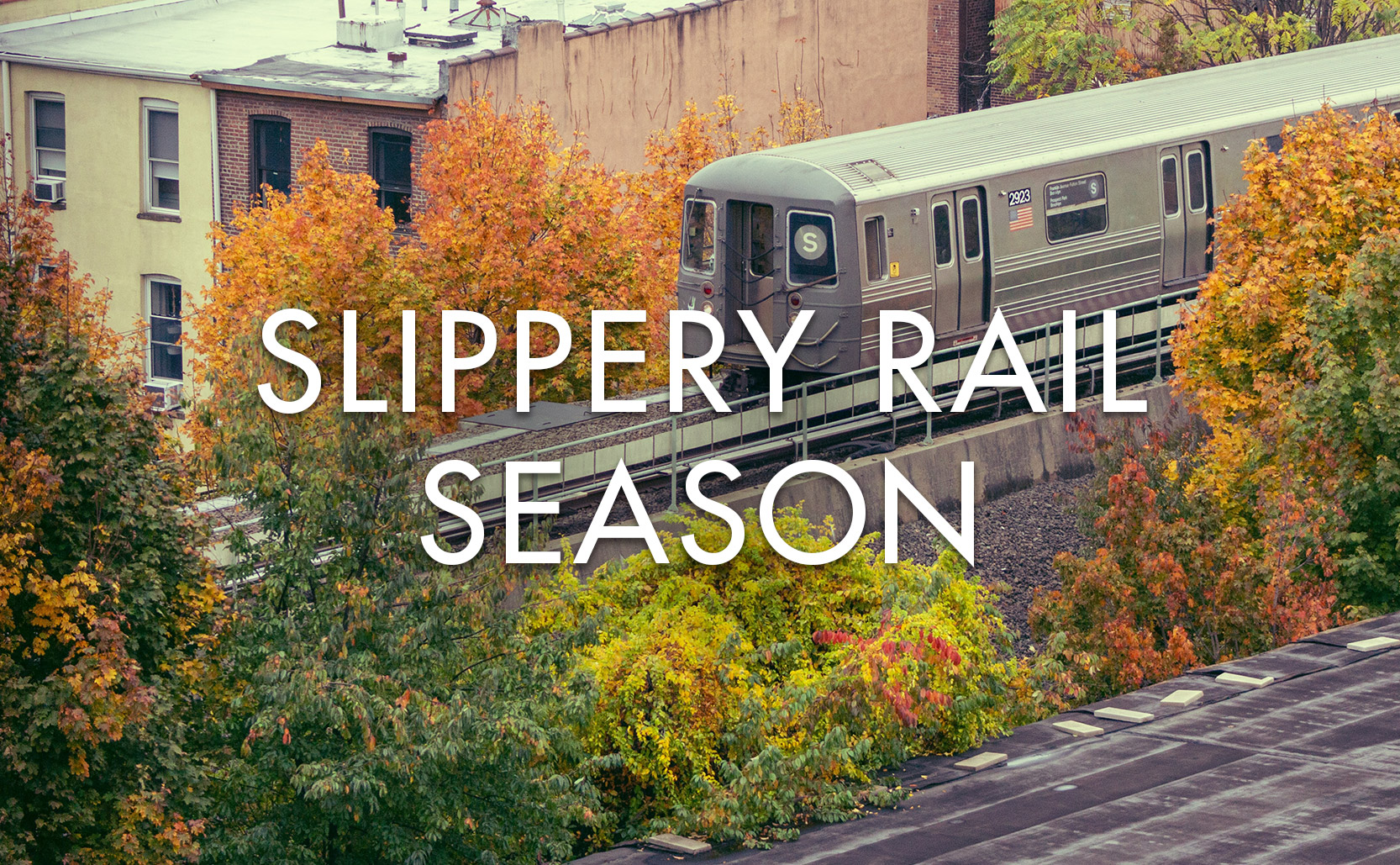Slippery Rail Season
The annual autumnal slow-down of regional rail is due to crushed leaves releasing oil on the tracks.
After the leaves change into their autumnal colors they fall to the ground. The ones that fall on rail lines are responsible for slower trains. As trains roll on down the line they crush any leaves on the rails, releasing pectin which acts as a low-friction grease making it harder to control the train. This is even worse when it rains. It becomes harder to slow down a train but also harder to accelerate again, resulting in delays. This is slippery rail season.
Transit organizations try and deal with leaves in a variety of ways. Trains & cars equipped with pressure-washing machines spray the tracks to remove the residue and uncrushed leaves (NJ Transit calls the train that does this the “Aqua Train”). Some organizations will also apply a mixture of gel & sand to increase traction.
Added info: another place you want traction is Pamplona, Spain during the Festival of San Fermín and the running of the bulls. Every morning, before humans and bulls run down the tight cobble stone streets of Pamplona, crews clean all trash from the streets as well as coat several sections of the route with a chemical anti-slip substance.


